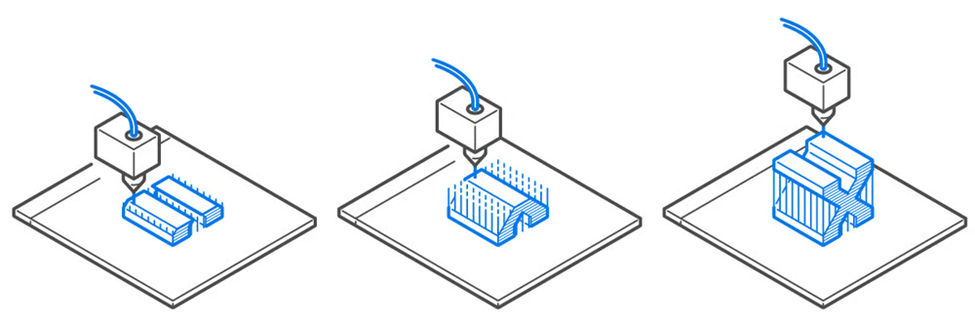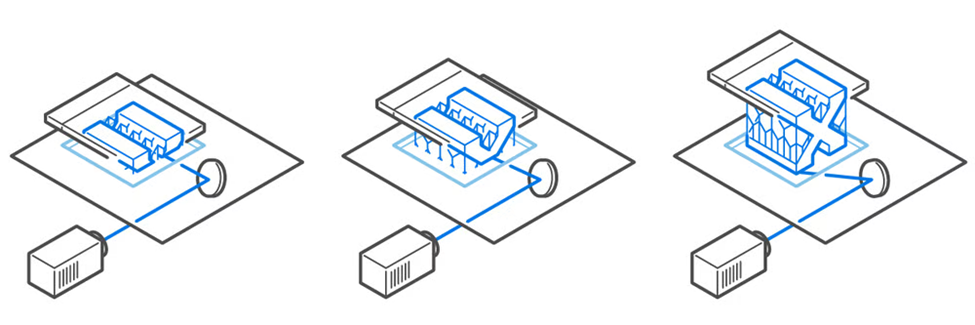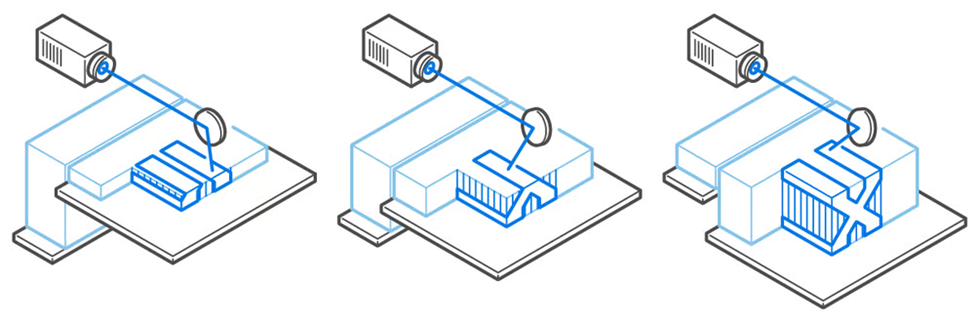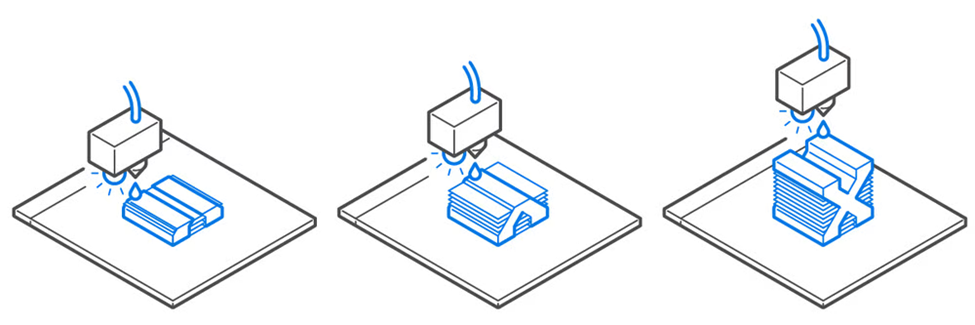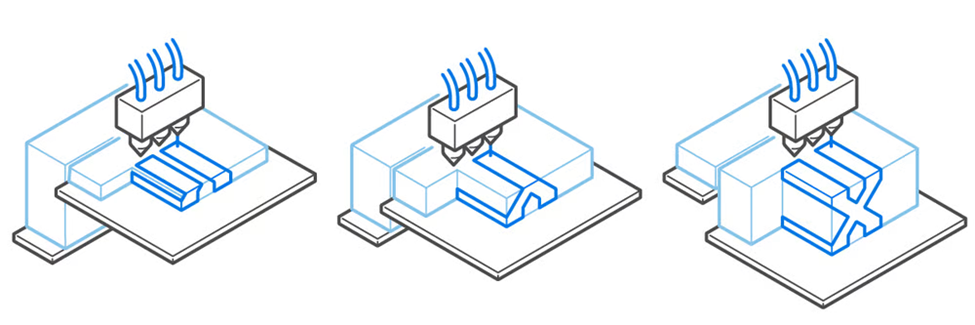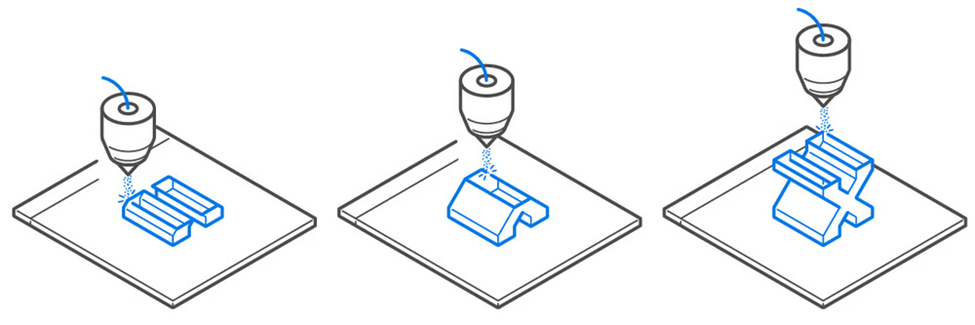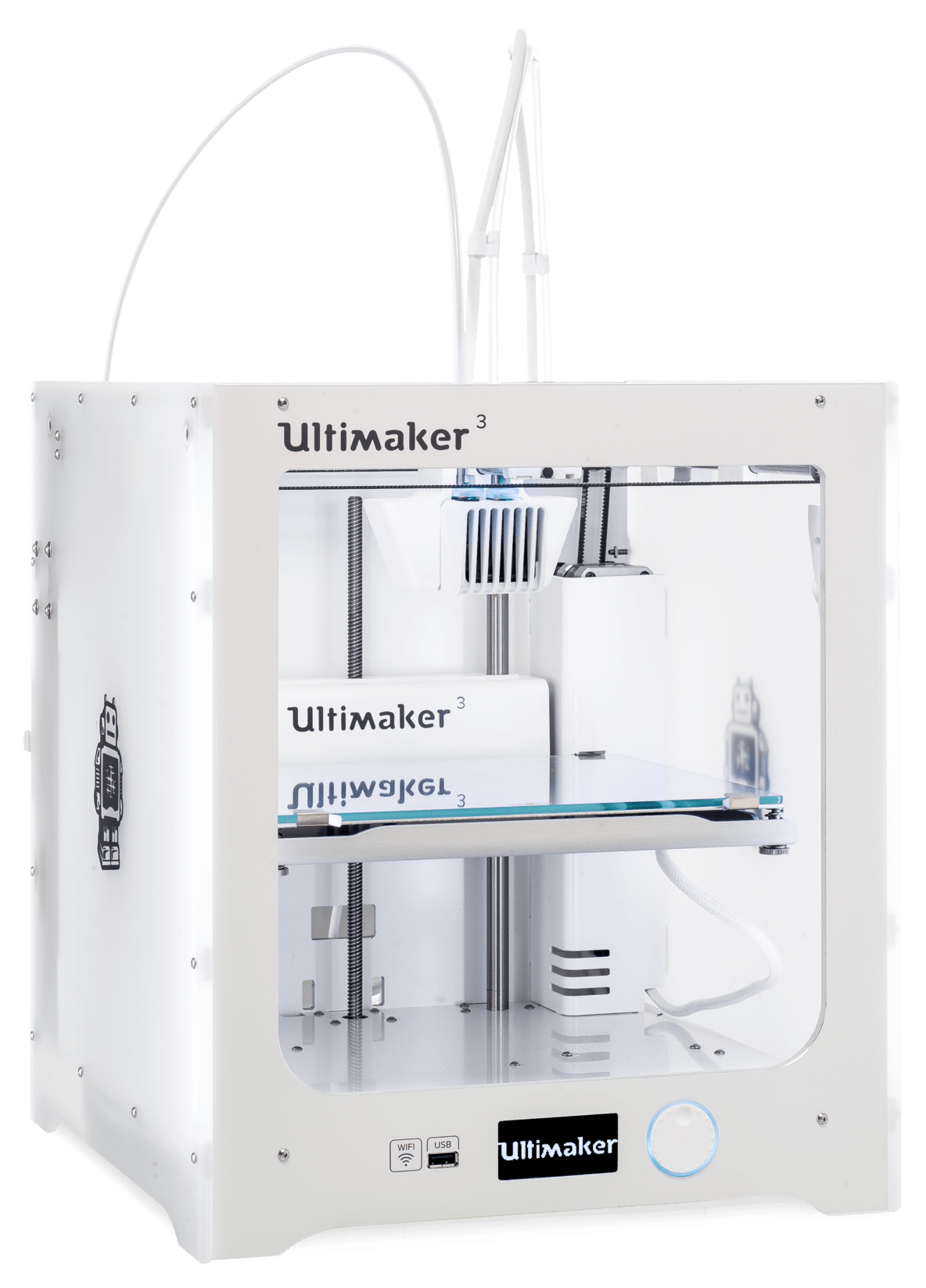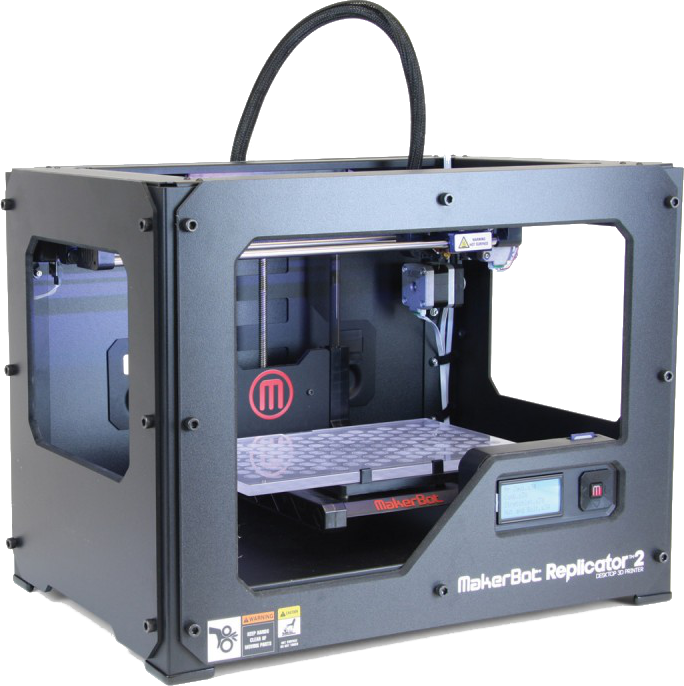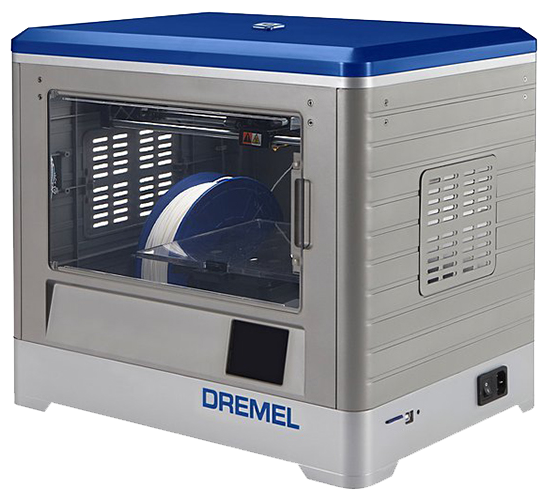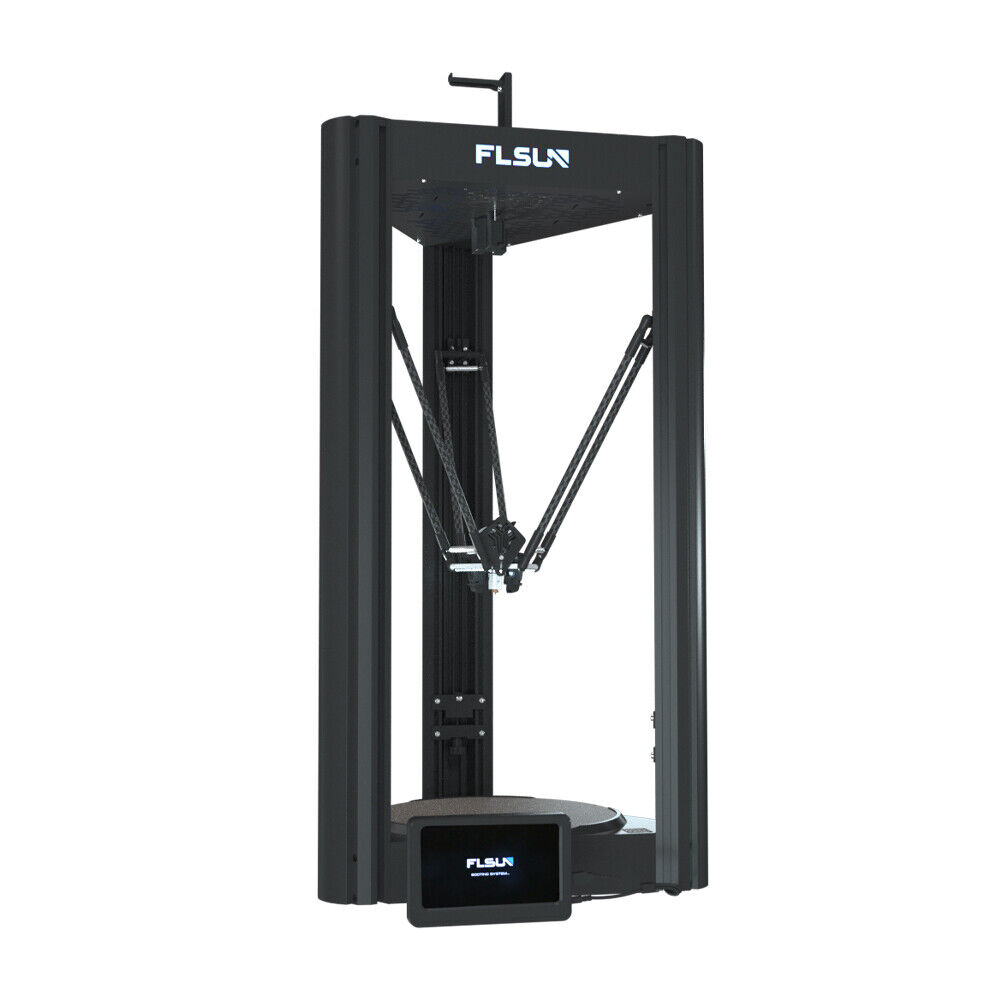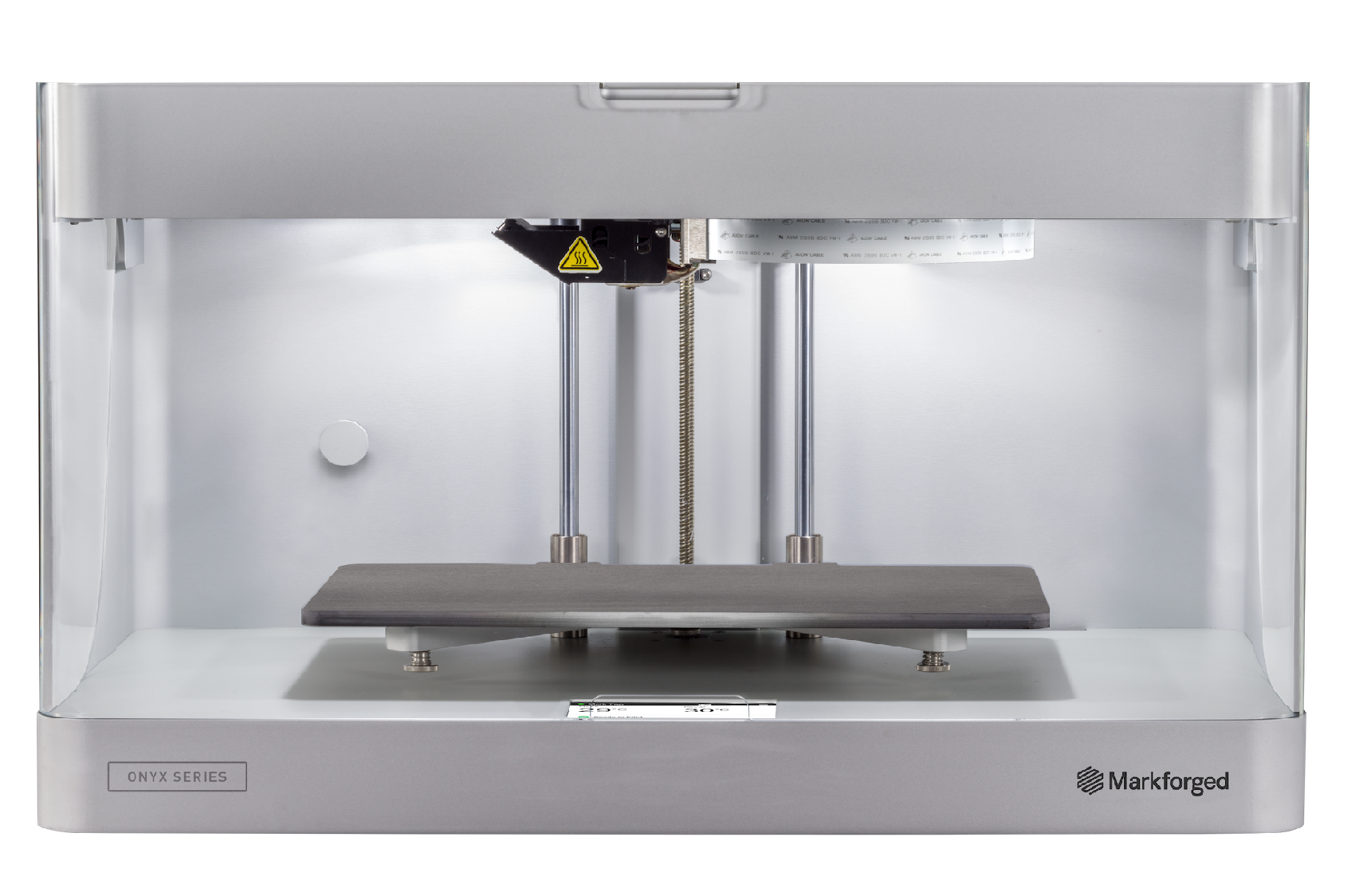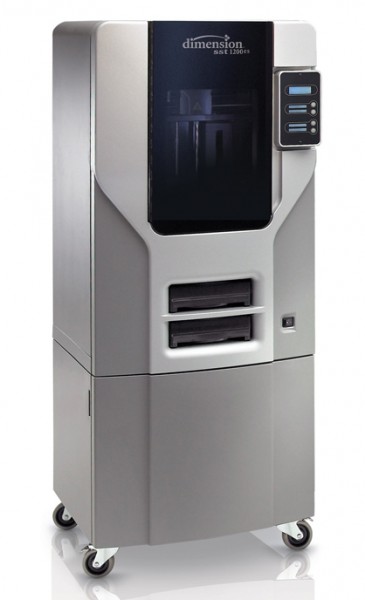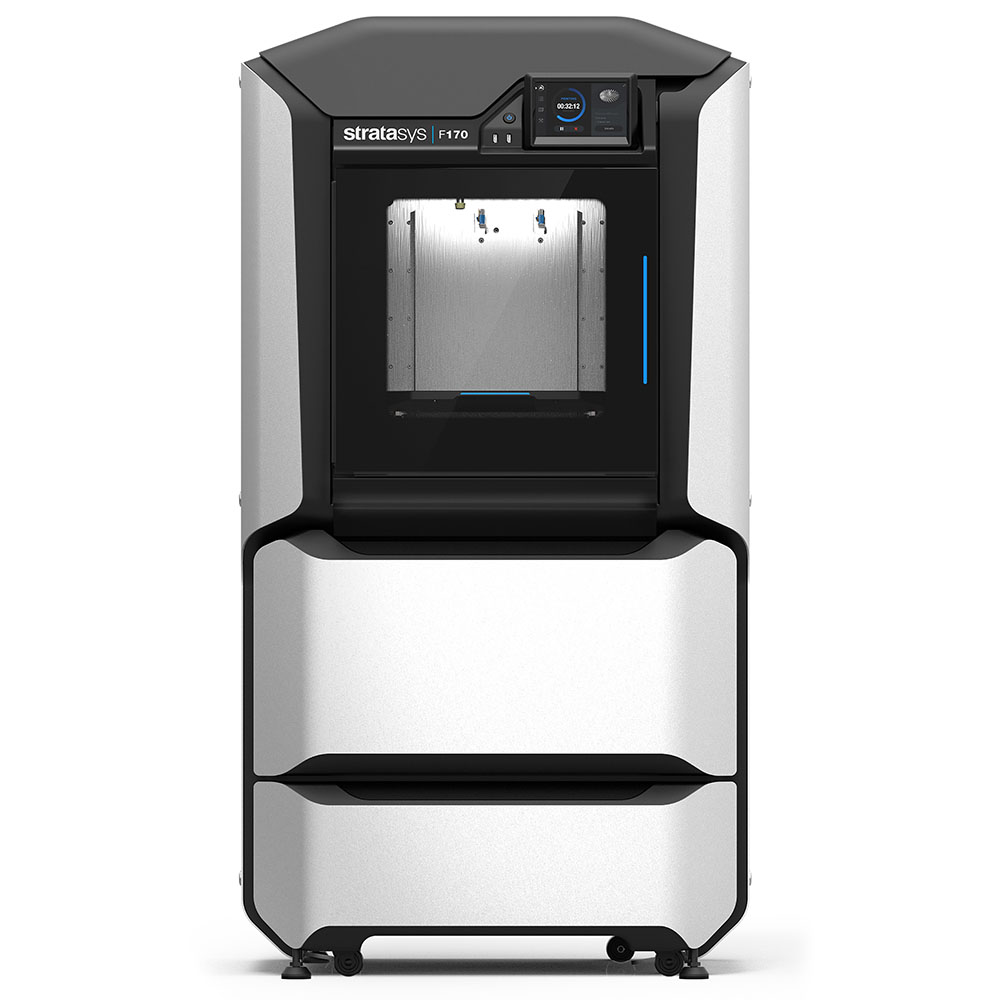Digital technologies/3D printing/3D printing- Intermediate/Types of printers
Printers
There are many different types of 3D printers that exist. Theses printers can be primarily categorized into 7 categories:
- Material Extrusion
- Vat Polymerization
- Powder Bed Fusion
- Material Jetting
- Binder Jetting
- Directed Energy Deposition
- Sheet Lamination
Material extrusion is the most commonly used 3D printing method. It refers to 3D printing where the material is extruded through a nozzle on to a build plate in a pre-determined path and the material solidifies into a solid object. Typically, the material used are plastic such as PLA and ABS. It is usually the most cost-effective 3D printing option, however, it does not provide the best dimensional accuracy. The material properties of printed object is also not that great compared to other methods. The FDM printers in Makerspace are a good example of material extrusion 3D printing.
Vat polymerization also known as resin 3D printing uses a light source to selective cure photopolymer resin in a vat. The build plate is moved vertically once the first layer of the print is cured. This is done layer by layer until the entire object is built. After the printing process, the object is cleaned of the remaining liquid resin and cured to ensure the mechanical properties of the part. The most common form of vat polymerization is stereolithography (SLA).
SLA is the oldest form of 3D printing technology. SLA printers use mirrors known as galvanometers with one on the X-axis and one on the Y-axis. The galvanometers aim the laser beams across a vat of resin, curing and solidifying a cross-section of the object inside the building area. Resin 3D printing allows for smoother surface finish with finer feature details. Makerspace offers resin 3D printing through Elegoo printers.
Other forms of resin printing include digital light processing (DLP) and liquid crystal display (LCD). DLP 3D printing uses a digital light projector instead of a laser beam like SLA printers. The digital projector screen flashes an image of a layer across the platform. This cures all points simultaneously. LED screens or a UV source is used to project light onto the resin. This light is directed to the build surface by a digital micromirror device (DMD). LCD 3D printing is also called masked stereolithography (MSLA) is similar to DLP above. Instead of a DMD, LCD printers uses an LCD screen. LCD is a newer technology designed to be an affordable alternative to DLP and stereolithography. It cures an entire layer of resin at once using an array of ultraviolet LED as a light source. It uses an LCD to selective mask UV light so that only selected areas are cured.
Powder bed fusion printers spread a thin layer of powdered material over a print bed which is melted (typically by a laser). This process is repeated with the powder layer fusing at specific points with the previous layer until the object is completed. The final product is encased and supported in unfused powder. This method is great for parts with complex geometries however it has a higher machine cost with higher material cost. It often results in slower build rates.
Material jetting involves tiny droplets of material that are deposited onto the build plate. The droplets are cured when exposed to light. This process is repeated layer by layer. This process allows for different materials to be printed in the same object. It can create textured surface finish. However, the process has limited materials and often have weaker mechanical properties with a higher process cost.
Binder jetting uses a liquid bonding agent that selectively binds layers of powder together. The printer nozzle will pass over the print bed and selective deposit droplets of binding agent on the powder layer. This process combines powder bed fusion and material jetting.
Directed energy deposition is a process where material is fed and fused at the same time as it is deposited. This is typically only performed on metal material. It is very similar to welding. This process is often used to repair or add features to metal objects by printing on pre-existing metal objects.
Sheet lamination is technically considered a form of 3D printing. However, it differs significantly from the other methods mentioned above. It stacks and laminates sheets of very thin material together to produce a 3D object. The stack can also be cut mechanically or by lasers to create the final shape. There are many ways fuse the material layers such as heat and sound. Since material is fused together then cut, this way of 3D printing generates much more waste than other technology.
Each brand of printer will have a different slicer and way of starting the prints which is explained in the following sections.
Slicers
There are many different slicers that can be used. Typically each 3D printer company will have its own 3D slicer software. For example, within Makerspace Ultimaker Cura is the typical slicer used for the Ultimaker printers. For more information about each slicer click on the "More Info" button under each printer below.
Our Printers
The following are the printers available for use at the Makerspaceː
| Slicer | Cura |
|---|---|
| Build Volume | 223 × 223 × 205 mm |
| Compatible materials | PLA, ABS, Flexible, etc |
| Minimum Layer Height | 0.06 mm |
| Heated Build Plate | Yes |
| More Information | Ultimaker 2+ |
| Slicer | Cura |
|---|---|
| Build Volume | 215 × 215 × 200 mm |
| Compatible materials | PLA, PVA, Flexible, etc |
| Minimum Layer Height | 0.02 mm |
| Heated Build Plate | Yes |
| More Information | Ultimaker 3 |
| Slicer | MakerBot Print |
|---|---|
| Build Volume | 285 × 153 × 155 mm |
| Compatible materials | PLA |
| Minimum Layer Height | 0.1 mm |
| Heated Build Plate | No |
| More Information | MakerBot Replicator 2 |
| Slicer | DigiLab 3D |
|---|---|
| Build Volume | 230 × 150 × 140 mm |
| Compatible materials | PLA |
| Minimum Layer Height | 0.1 mm |
| Heated Build Plate | No |
| More Information | Dremel 3D20 |
| Slicer | ideaMaker |
|---|---|
| Build Volume | 305 × 305 × 605 mm |
| Compatible materials | PLA, ABS, PVA, Flexible |
| Minimum Layer Height | 0.01 mm |
| Heated Build Plate | Yes |
| More Information | Raise3D N2 Plus |
| Slicer | Cura |
|---|---|
| Build Volume | 300 × 300 × 410 mm |
| Compatible materials | PLA, ABS, Flexible, etc |
| Minimum Layer Height | 0.05 mm |
| Heated Build Plate | Yes |
| More Information | FLsun v400 |
| Slicer | Eiger |
|---|---|
| Build Volume | 320 × 132 × 154 mm |
| Compatible materials | Nylon, Onyx, Carbon Fiber, Fiberglass, Kevlar |
| Minimum Layer Height | 0.1 mm |
| Heated Build Plate | No |
| More Information | Markforged Mark Two |
| Slicer | GrabCAD Print |
|---|---|
| Build Volume | 254 × 254 × 305 mm |
| Compatible materials | ABS, Soluble support |
| Minimum Layer Height | 0.254 mm |
| Heated Build Plate | Yes |
| More Information | Stratasys Dimension SST 1200es |
| Slicer | GrabCAD Print |
|---|---|
| Build Volume | 254 × 254 × 254 mm |
| Compatible materials | PLA, ABS, ASA, TPU, Soluble support |
| Minimum Layer Height | 0.127 mm |
| Heated Build Plate | Yes |
| More Information | Stratasys F170 |
| Slicer | ChituBox |
|---|---|
| Build Volume | 218.88 × 123.12 × 250 mm |
| Compatible materials | Standard, ABS-like, rubber, etc |
| Minimum Layer Height | 0.01 mm |
| Heated Build Plate | No |
| More Information | Elegoo Saturn 2 8k |
